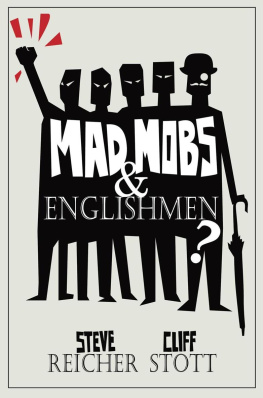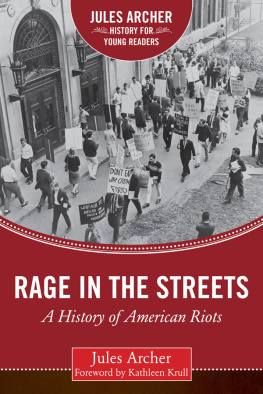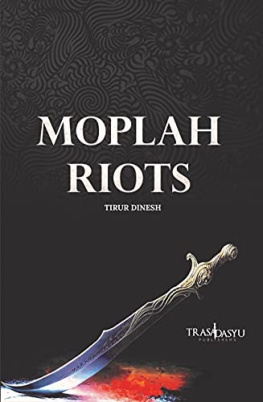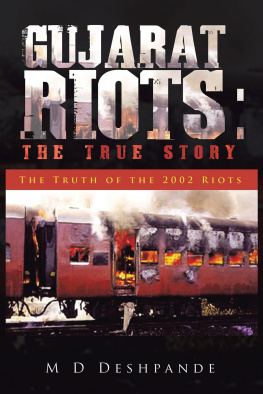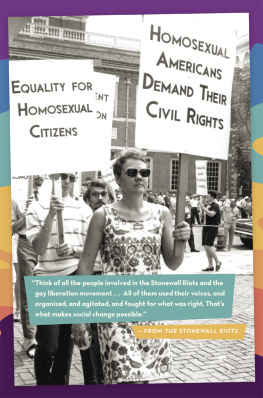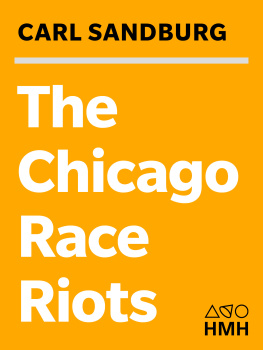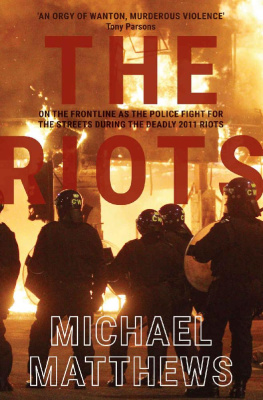Steve Reicher - Mad Mobs and Englishmen? Myths and realities of the 2011 riots
Here you can read online Steve Reicher - Mad Mobs and Englishmen? Myths and realities of the 2011 riots full text of the book (entire story) in english for free. Download pdf and epub, get meaning, cover and reviews about this ebook. year: 2011, publisher: Robinson, genre: Politics. Description of the work, (preface) as well as reviews are available. Best literature library LitArk.com created for fans of good reading and offers a wide selection of genres:
Romance novel
Science fiction
Adventure
Detective
Science
History
Home and family
Prose
Art
Politics
Computer
Non-fiction
Religion
Business
Children
Humor
Choose a favorite category and find really read worthwhile books. Enjoy immersion in the world of imagination, feel the emotions of the characters or learn something new for yourself, make an fascinating discovery.
- Book:Mad Mobs and Englishmen? Myths and realities of the 2011 riots
- Author:
- Publisher:Robinson
- Genre:
- Year:2011
- Rating:4 / 5
- Favourites:Add to favourites
- Your mark:
Mad Mobs and Englishmen? Myths and realities of the 2011 riots: summary, description and annotation
We offer to read an annotation, description, summary or preface (depends on what the author of the book "Mad Mobs and Englishmen? Myths and realities of the 2011 riots" wrote himself). If you haven't found the necessary information about the book — write in the comments, we will try to find it.
In August 2011, London and many other English towns and cities erupted into some of the worst rioting for decades. David Cameron blamed a broken society with a sick morality; Tony Blair a defiant underclass. Yet with no evidence to support their claims, their remarks were typical of the storm of uninformed comments that followed the riots, based largely on longstanding misconceptions of why people riot. With their extensive expertise in crowd behaviour and psychology, and years of research experience studying crowds, riots and hooliganism worldwide, psychologists Steve Reicher and Cliff Stott challenge the myths of the 2011 riots perpetuated in the media and elsewhere; consider the reality on the ground and how to avoid a repeat scenario.
An excellent and important book. In this fascinating account, Reicher and Stott challenge the widespread dismissal of the riots as criminality pure and simple. They offer compelling evidence for an alternative view of what really caused the uprisings. All of us, especially our policy makers, need to take note in order to prevent more riots in the future.
George Akerlof, Nobel Prize-Winner in Economics, 2001 and Professor of Economics at UC Berkeley
Readable, considered and enlightening... at last, an authoritative examination of the riots by leading experts on the social psychology of crowd behaviour. Anyone who really wants to understand the riots should read this.
Claudia Hammond, writer and broadcaster
The aftermath of the summer riots saw a rush to find simple explanations - few of them rooted in evidence. Reicher and Stotts book marks one of the first attempts to look beyond the political rhetoric. Drilling down into two case studies - disturbances in Tottenham and Hackney - they have emerged with some intriguing insights into what the disorder may have been about.
Paul Lewis, Special Projects Editor for The Guardian
Insightful and well-argued one of the most penetrating analyses of rioting ever published. A must-read for anyone wishing to understand the issues behind urban conflict.
Jim Sidanius, Professor of Psychology and African and African American Studies at Harvard University
This reasoned and intelligent approach is in stark contrast to the moral panics apparent in Westminster and the media in the immediate aftermath of the riots. They have endeavoured to present a carefully researched document that seeks to understand such events and find workable strategies to prevent future occurrences and should be congratulated.
Superintendent Roger Evans, former Deputy Commander of the Metropolitan Police Territorial Support Group
Steve Reicher: author's other books
Who wrote Mad Mobs and Englishmen? Myths and realities of the 2011 riots? Find out the surname, the name of the author of the book and a list of all author's works by series.

